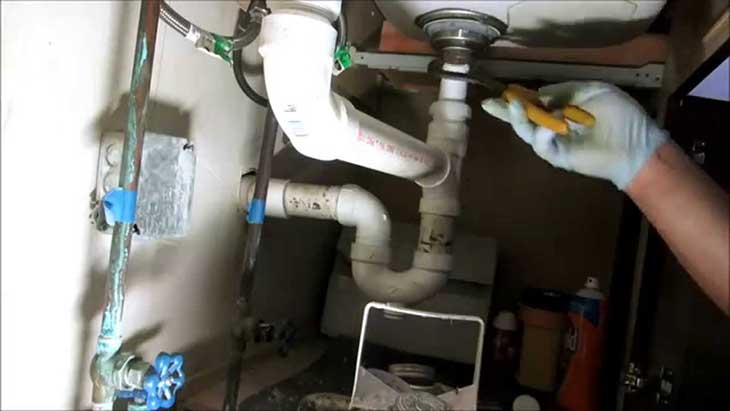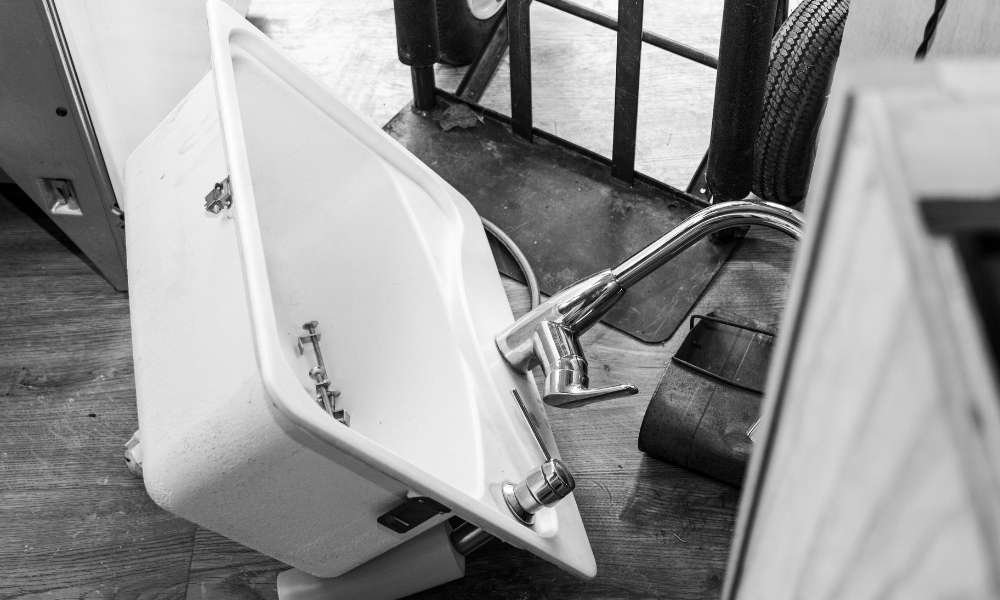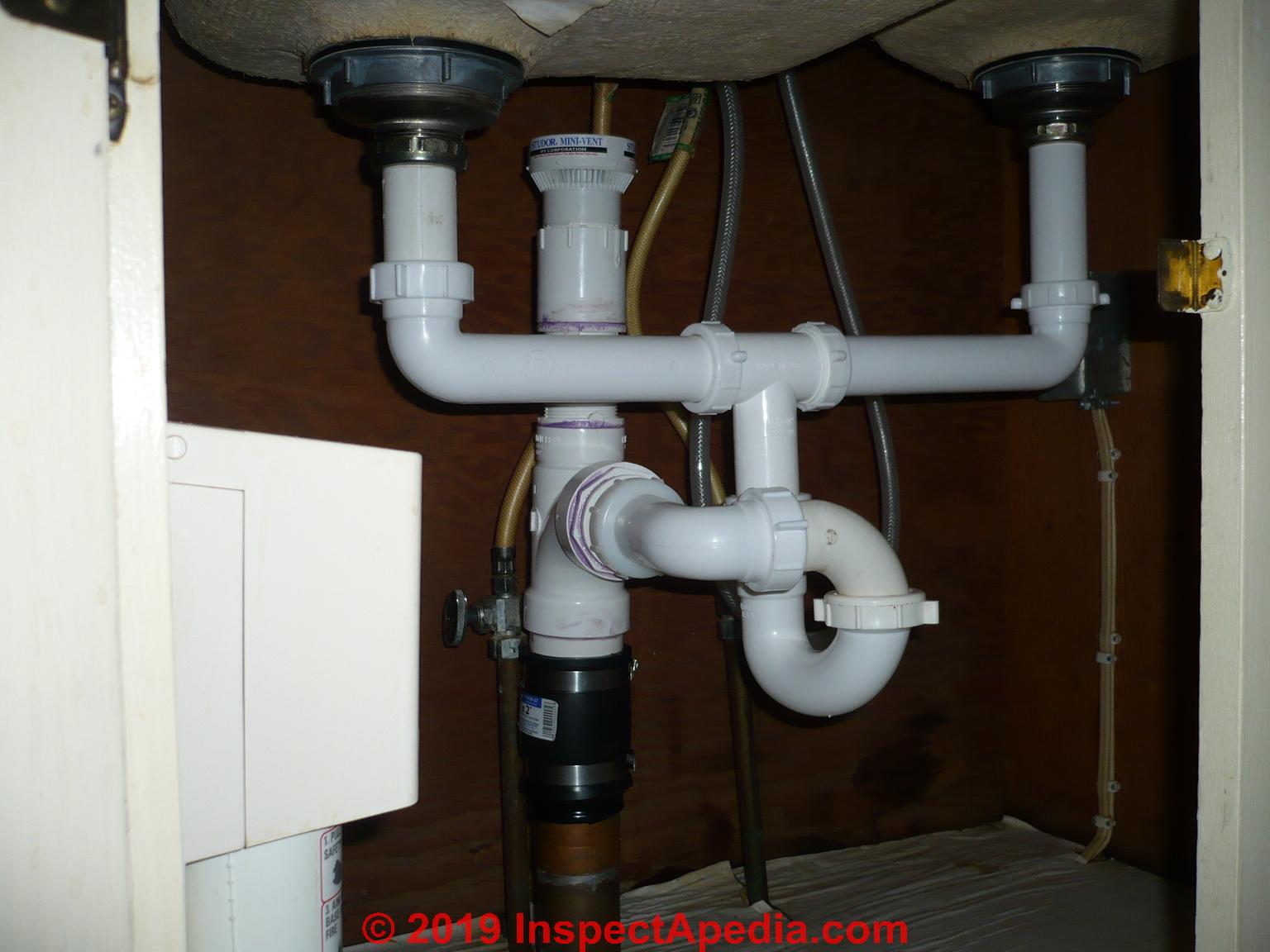Installing new cabinets in your kitchen is an exciting and transformative home improvement project. However, before you can install the cabinets, you will need to disconnect your kitchen sink. This may seem like a daunting task, but with the right tools and steps, you can easily disconnect your sink and get ready for your cabinet installation. In this article, we will guide you through the process of disconnecting your kitchen sink for cabinet installation.Disconnecting Kitchen Sink to Install Cabinet
Disconnecting a kitchen sink is an essential step in installing new cabinets. Here is a step-by-step guide on how to disconnect your kitchen sink:How to Disconnect a Kitchen Sink for Cabinet Installation
Step 1: Turn off the water supply - Before you begin disconnecting your sink, make sure to turn off the water supply. You can do this by turning off the main water valve in your home. Step 2: Prepare your work area - Lay down towels or a plastic sheet to protect your flooring from any water spills or debris. Make sure to also clear out any items from under the sink. Step 3: Remove the drain pipes - Using a pair of pliers, loosen the nuts that connect the drain pipes to the sink and the wall. Once the nuts are loose, you can easily remove the drain pipes from the sink. Step 4: Disconnect the water supply lines - Using a wrench, loosen the nuts that connect the water supply lines to the faucet. Once the nuts are loose, you can disconnect the water supply lines from the faucet. Step 5: Remove the sink from the countertop - Most sinks are held in place by clips or brackets underneath. Use a screwdriver to loosen and remove these clips or brackets. Then, carefully lift the sink out of the countertop and set it aside.Steps for Disconnecting a Kitchen Sink to Install Cabinets
Now that your sink is disconnected, you can remove it from the kitchen completely. This will make room for your new cabinets. Here's how to remove your kitchen sink:Removing a Kitchen Sink for Cabinet Installation
Plumbing can be intimidating, but with the right steps, you can easily disconnect the plumbing for your kitchen sink. Here are some tips to make the process smoother: - Before disconnecting any plumbing, make sure to turn off the water supply and drain any remaining water from the sink. - Take pictures of the plumbing before you disconnect it. This will make it easier to reconnect everything correctly later on. - Label the plumbing connections with tape or markers to remember which pipes go where.Disconnecting Plumbing for Kitchen Sink Cabinet Installation
Once your sink is disconnected and removed, you can now begin preparing for your cabinet installation. Here are some things to keep in mind: - Clean the area where your sink was located. This will ensure a smooth and clean surface for your new cabinets. - Measure the space where the sink was located. This will help you determine the size of the cabinets you will need. - Make any necessary repairs to the plumbing or the countertop before installing your new cabinets.Preparing to Install Cabinets: Disconnecting the Kitchen Sink
If you are a DIY enthusiast, disconnecting your kitchen sink for cabinet installation is a task you can easily tackle. Here are some helpful tips for a successful DIY project: - Use the right tools for the job, such as pliers, a wrench, and a screwdriver. - Take your time and be patient. Rushing through the process can lead to mistakes and potential damage. - Follow the manufacturer's instructions for your specific sink and plumbing system.DIY Guide: Disconnecting Kitchen Sink for Cabinet Installation
Here are some essential tools you will need to successfully disconnect your kitchen sink for cabinet installation: - Pliers - Wrench - Screwdriver - Towels or plastic sheet - Bucket (to catch any remaining water)Tools Needed for Disconnecting Kitchen Sink for Cabinet Installation
Disconnecting your kitchen sink can seem like an overwhelming task, but with these tips, you can make the process easier and smoother: - Refer to the manufacturer's instructions for your specific sink and plumbing system. - Take your time and be patient. Rushing through the process can lead to mistakes and potential damage. - Keep your work area clean and organized to avoid any accidents or mishaps.Tips for Disconnecting Kitchen Sink to Install Cabinets
When disconnecting your kitchen sink, it's essential to avoid these common mistakes: - Not turning off the water supply before starting the process. - Forgetting to drain any remaining water from the sink. - Rushing through the process and potentially damaging the plumbing or countertop. Now that you know how to disconnect your kitchen sink for cabinet installation, you can confidently tackle this task before installing your new cabinets. Remember to take your time, use the right tools, and follow the steps carefully for a successful project. Good luck!Common Mistakes to Avoid When Disconnecting Kitchen Sink for Cabinet Installation
Why Disconnecting Your Kitchen Sink is Essential for Installing Cabinets

The Importance of Proper Installation
 When it comes to designing and renovating your home, the kitchen is often considered the heart of the house. It is a space where families gather to cook, eat, and spend time together. As such, it is important to ensure that your kitchen is not only aesthetically pleasing, but also functional and efficient. This is where proper installation of cabinets comes into play.
Kitchen cabinets
are not just for storage, they also play a crucial role in the overall design and layout of a kitchen. They can enhance the visual appeal of the space and provide much-needed organization. However, in order for these cabinets to be installed correctly, the
kitchen sink
often needs to be disconnected.
When it comes to designing and renovating your home, the kitchen is often considered the heart of the house. It is a space where families gather to cook, eat, and spend time together. As such, it is important to ensure that your kitchen is not only aesthetically pleasing, but also functional and efficient. This is where proper installation of cabinets comes into play.
Kitchen cabinets
are not just for storage, they also play a crucial role in the overall design and layout of a kitchen. They can enhance the visual appeal of the space and provide much-needed organization. However, in order for these cabinets to be installed correctly, the
kitchen sink
often needs to be disconnected.
The Process of Disconnecting a Kitchen Sink
 Disconnecting the
kitchen sink
may seem like a daunting task, but it is a necessary step in order to install cabinets properly. The first step is to turn off the water supply to the sink. This can usually be done by turning off the shut-off valves under the sink. If there are no shut-off valves, you may need to turn off the main water supply to your home.
Once the water supply is turned off, the next step is to disconnect the plumbing. This involves removing the
drain pipes
and
water supply lines
that connect the sink to the plumbing system. This can be done using a wrench or pliers, depending on the type of fittings used. It is important to have a bucket or towel handy to catch any water that may be left in the pipes.
Disconnecting the
kitchen sink
may seem like a daunting task, but it is a necessary step in order to install cabinets properly. The first step is to turn off the water supply to the sink. This can usually be done by turning off the shut-off valves under the sink. If there are no shut-off valves, you may need to turn off the main water supply to your home.
Once the water supply is turned off, the next step is to disconnect the plumbing. This involves removing the
drain pipes
and
water supply lines
that connect the sink to the plumbing system. This can be done using a wrench or pliers, depending on the type of fittings used. It is important to have a bucket or towel handy to catch any water that may be left in the pipes.























:no_upscale()/cdn.vox-cdn.com/uploads/chorus_asset/file/19495086/drain_0.jpg)
















/how-to-install-a-sink-drain-2718789-hero-24e898006ed94c9593a2a268b57989a3.jpg)


















































